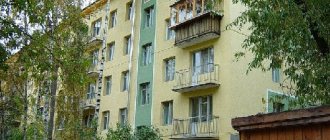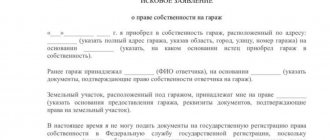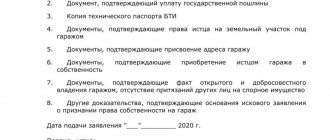Municipal property is another type of property ownership adopted at the legislative level in Russia. It has much in common with state ownership rights. Municipal ownership includes property bases managed by rural or urban settlements, other municipalities and entities. The owner, on behalf of these entities, carries out a set of management actions regarding the movable or immovable fund. Local government regulates, manages and controls the activities of facilities.
Municipal property is property owned by a specific government body. It can be considered using the example of government medical institutions, universities, public utilities and other institutions. Ownership of municipal property is carried out by local government. The city, population, republic can use, manage and own the object. Moreover, the property is used to meet the needs of Russians who live in the territory of the municipal area.
What property is municipal property - what is included in municipal property
Composition of municipal property:
- City budget resources.
- Non-budgetary funds of the municipality.
- Property base owned by local authorities.
- Land resources.
- The riches of nature.
- Corporations, factories, municipal firms.
- Bank branches.
- Educational institutions of the municipality.
- Healthcare companies, cultural and sports branches.
- Real estate.
Distributed state or municipal property is property that has already been divided among the participants in the relationship. Municipal property is regulated by local governments. The rights of owners, namely municipalities, are exercised by local authorities. This principle is provided for by Russian legislative acts, charter and regulations. An important management role is played by the people, residents of an autonomous region or city.
According to the legislation of the country, local government can transfer its own ownership to a legal or natural person for a certain time or on a permanent basis. The municipality has the right to alienate property in accordance with established rules, rent it out for temporary use, carry out other transactions, and define in a contract or agreement the principles for using the property. This applies to property that is privatized or transferred into ownership.
In accordance with the law, local governments have the opportunity to establish a number of conditions for the use of land resources located within the administrative district.
Privatization of municipal properties is carried out in a certain order, in accordance with a number of conditions. They are determined by the population of the city, or representative bodies, local government. All profits from privatization operations are used to replenish the local budget. Municipal property is protected and recognized by the state, just like private, state or other forms of property.
Settlements may own
(according to Article 50 of Federal Law No. 131):
1) property intended for electricity, heat, gas and water supply to the population, drainage, supply of fuel to the population, for lighting the streets of populated areas;
2) public roads, bridges and other transport engineering structures within the boundaries of populated areas, with the exception of public roads, bridges and other transport engineering structures of federal and regional significance, as well as property intended for their maintenance;
3) housing stock for social use to provide low-income citizens living in the settlement and in need of improved housing conditions with residential premises under the terms of a social tenancy agreement, as well as property necessary for maintaining the municipal housing stock;
4) passenger transport and other property intended for transport services to the population within the boundaries of the settlement;
5) property intended to prevent and eliminate the consequences of emergency situations within the boundaries of the settlement;
6) facilities, as well as fire-fighting equipment and equipment intended to provide primary fire extinguishing measures;
7) property of settlement libraries;
property intended for organizing leisure time and providing residents of the settlement with the services of cultural organizations;
9) objects of cultural heritage (historical and cultural monuments) regardless of the category of their historical and cultural significance in accordance with the legislation of the Russian Federation;
10) property intended for the development of physical culture and mass sports on the territory of the settlement;
11) property intended for organizing the improvement and landscaping of the territory of the settlement, including for the arrangement of public places and places of mass recreation for the population;
12) property intended for the collection and removal of household waste and garbage;
13) property, including land plots intended for organizing funeral services and maintaining burial places;
14) property intended for the official publication (promulgation) of municipal legal acts and other official information;
15) land plots classified as municipal property of the settlement in accordance with federal laws;
16) ponds, flooded quarries on the territory of the settlement;
17) property intended for the creation, development and protection of medical and recreational areas and resorts of local importance on the territory of the settlement;
18) property intended for organizing the protection of the population and territory of the settlement from natural and man-made emergencies;
19) property intended to ensure the safety of people on water bodies, protect their life and health.
Municipal districts may own:
1) property intended for electricity and gas supply to settlements within the boundaries of the municipal district;
2) public roads between populated areas, bridges and other transport engineering structures outside the boundaries of populated areas within the boundaries of a municipal district, with the exception of public roads, bridges and other transport engineering structures of federal and regional significance, as well as property intended for their service;
3) passenger transport and other property intended for transport services to the population between settlements in the territory of the municipal district;
4) property intended to prevent and eliminate the consequences of emergency situations on the territory of the municipal district;
5) property intended for organizing the protection of public order in the territory of the municipal district by the municipal police;
6) property intended to provide publicly accessible and free pre-school, primary general, basic general, secondary (complete) general education, as well as the provision of additional education and organization of recreation for children during the holidays;
7) property intended for the provision in the territory of the municipal district of emergency medical care (with the exception of sanitary aviation), primary health care in outpatient clinics, inpatient clinics and hospitals, medical care for women during pregnancy, during and after childbirth;
property intended for disposal and processing of household and industrial waste;
9) archival funds, including the cadastre of land management and urban planning documentation, as well as property intended for storing these funds;
10) property, including land plots, intended for maintaining inter-settlement burial sites and organizing funeral services on the territory of the municipal district;
11) property of inter-settlement libraries;
12) property necessary for the official publication (promulgation) of municipal legal acts and other official information;
13) land plots classified as municipal property of a municipal district in accordance with federal laws;
14) ponds, flooded quarries located on the territories of two or more settlements or on the inter-settlement territory of a municipal district;
15) property intended for the creation, development and protection of medical and recreational areas and resorts of local importance in the territory of the municipal district;
16) property intended to provide settlements included in the municipal district with services for organizing leisure time and services of cultural organizations;
17) property intended for the development of physical culture and mass sports on the territory of the municipal district;
18) property intended for organizing the protection of the population and territory of the municipal district from natural and man-made emergencies;
19) property intended to ensure the safety of people on water bodies, protect their life and health;
20) objects of cultural heritage (historical and cultural monuments) regardless of the category of their historical and cultural significance in cases established by the legislation of the Russian Federation.
Urban districts may own all types of property listed above.
=====================
In cases where municipalities acquire ownership rights to property that is not intended for the implementation of certain state powers delegated to local self-government bodies, to ensure the activities of local self-government bodies and officials, municipal employees, employees of municipal enterprises and institutions, or not related to the types of property listed above , the specified property is subject to repurposing (changing the intended purpose of the property) or alienation. The procedure and terms for the alienation of such property are established by federal law.
The specifics of the emergence, implementation and termination of the right of municipal property, as well as the procedure for accounting for municipal property are established by federal law.
======================
In conclusion, it should be taken into account: the property owned by the Moscow Region is divided into two parts. One part is assigned to municipal enterprises and institutions, respectively - on the right of economic management and the right of operational management, and the second part of the property - local budget funds and other municipal property not assigned to municipal enterprises and institutions, is, in accordance with Art. 217 of the Civil Code of the Russian Federation, municipal treasury.
========================
List of what may belong to the Moscow Region
The most general list of what belongs to municipal property (briefly):
- land;
- real estate objects - housing, non-residential buildings and infrastructure facilities (utilities, water supply, local roads, etc.);
- movable property.
The property of the municipality is subject to registration in the register of property objects, on the balance sheet of enterprises, institutions or the treasury of the Moscow Region, and is registered with the Federal Service for State Registration, Cadastre and Cartography.
What legal acts regulate issues of property of the Ministry of Defense
The main regulatory legal acts that determine what property is the property of municipalities in our country:
- Civil Code of the Russian Federation.
- Federal Law of October 6, 2003 No. 131-FZ “On the general principles of organizing local self-government in the Russian Federation.”
Directly or indirectly, property under the jurisdiction of local governments is covered by the Federal Laws “On the Privatization of State and Municipal Property” (No. 178-FZ), “On Education in the Russian Federation” (No. 273-FZ), “On the Fundamentals of Protecting the Health of Citizens in RF" (No. 323-FZ), etc.
ConsultantPlus experts discussed how to privatize state and municipal property. Use these instructions for free.
to read.






